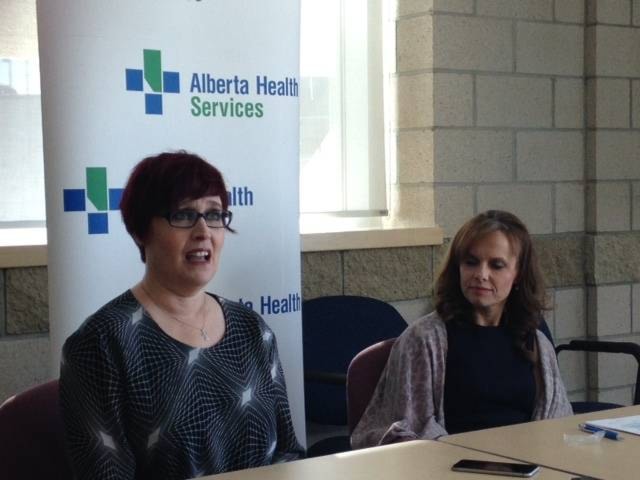Shelley Castor knew right away she was having a stroke.
Standing inside a Red Deer bank on April 5, 2016, she felt dizzy, her jaw sagged, her hand started to curl and her speech was affected. By the time she walked outside where her husband was waiting, her left leg gave way and he had to catch her.
They immediately headed to Red Deer Regional Hospital Centre nearby.
Once she got there, her luck began to change. A specialized stroke team was already in the trauma room, having just wrapped up a training exercise when Castor was wheeled in.
As well, thanks to a year-long quality improvement initiative, the team was trained to respond faster than ever to her condition. Within 23 minutes, she was given tPA (tissue Plasminogen Activator), a drug that breaks down blood clots caused by ischemic strokes.
With strokes, minutes are critical, which is why the province’s stroke teams are so pleased to have developed a response that has halved the average time it takes to diagnose a stroke and administer tPA from 70 minutes to 36.
Red Deer neurologist Dr. Jennifer Bestard said the national door-to-needle goal time for administering clot busting drugs is 60 minutes. Alberta health professionals set themselves a goal of 30 minutes.
“Time is brain,” said Bestard, explaining that for every minute, blood supply to the brain is blocked two million brain cells die.
Treating stroke victims quicker saves lives as well as reducing recovery times and limiting ongoing disabilities.
Changing door-to-needle times involved rethinking how patients are treated from the moment they arrive at the hospital. Instead of responding step-by-step, which ate up valuable time, all of the health professionals and resources needed to deal with a stroke are mobilized together.
“We basically just tailored it. We made it so we had a ‘swarm’ in the emergency room so all these key players swarm at the same time.”
Bestard praised all of the health professionals involved for their achievements in reducing response times.
“I just think it’s remarkable what we have been able to do here in Red Deer.”
Alberta’s 17 stroke treatment centres are now among the fastest in the world in giving patients clot-busting tPA.
Castor, 50, said when she arrived at the hospital, doctors and nurses were a whirl of activity.
“I could see everybody moving really fast. I’d never seen anything like it. It was just like the movies really.”
Hours later, lying in an intensive care bed, paralyzed on her left side the mother of a now-12-year-old daughter, tried to will her arm to move. Remarkably, by 5 a.m. that morning, she could move her hand and her facial sagging improved.
“On the eighth day I walked out out of the hospital, with no wheelchair, with no walker.”
Castor said she couldn’t have asked for more support than she got from health staff throughout the whole process, including her recovery time at home.
pcowley@www.reddeeradvocate.com
